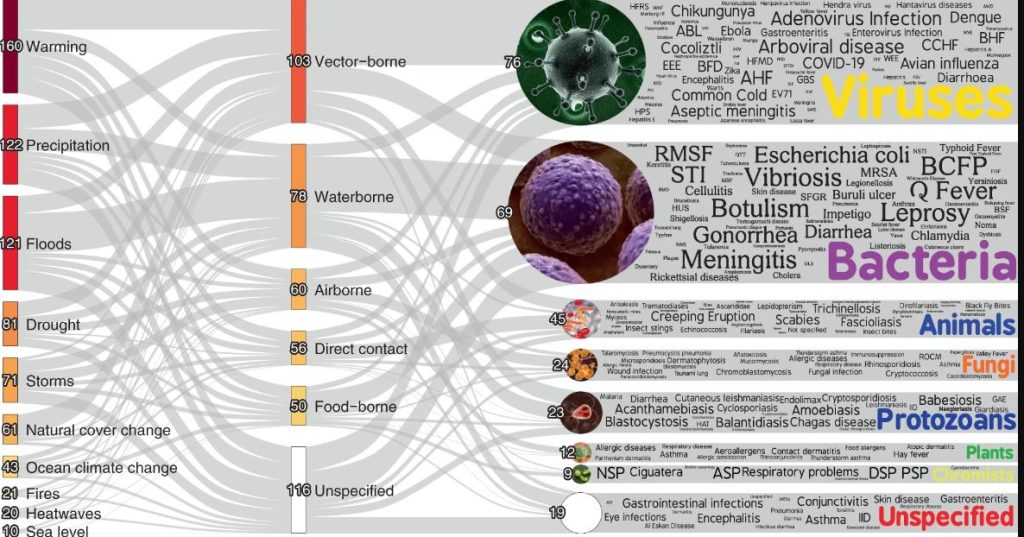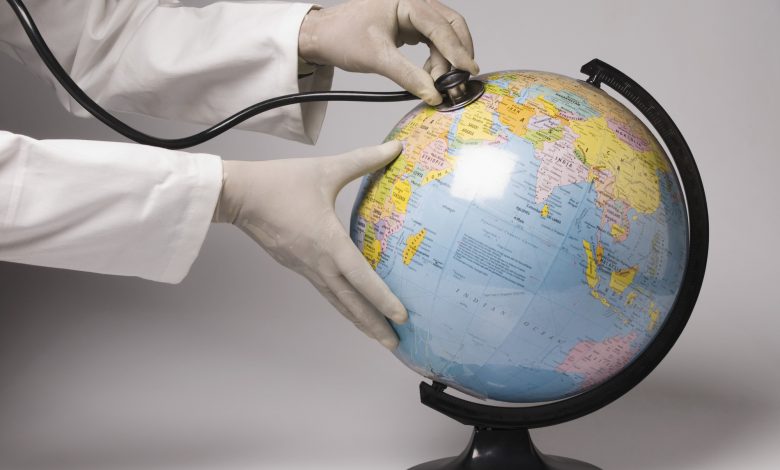Climate risk: more than half of human diseases will worsen due to climate change
There are over 1,000 unique correlations linking climate risk to disease
(Sustainabilityenvironment.com) – More than 58% of known human pathogenic diseases have been affected at some point by climate risk. This means that climate change and rising greenhouse gases are making us more and make infection.
To launch the alarm a team of researchers from the University of Hawaii of Honolulu published a study on Nature Climate Change. Viruses have always existed, but a link seems to emerge that is slowly changing the balances in nature.
The researchers systematically analyzed the impacts of 10 types of climate risk sensitive to greenhouse gas emissions on each known human pathogenic disease. Among the risks considered are drought, heat waves, fires, extreme rainfall, floods, storms, sea level rise, biogeochemical change of the oceans and land cover change.
The research has led them to examine more than 70 thousand scientific articles to identify the possible correlations between climate risk and a more or less important impact on pathogenic diseases. And the result is frightening. To date, there are more than 1,000 unique dynamics through which climate change has fostered the spread of pathogens in humans.
“Given the extensive and pervasive consequences of the COVID 19 pandemic, it was really scary to discover the huge health vulnerability resulting from greenhouse gas emissions,” said Camilo Mora, geography professor at the College of Social Sciences (CSS) and head author of the study. “There are too many diseases and transmission routes to make us think that we can really adapt to climate change. It highlights the urgent need to reduce greenhouse gas emissions globally”.
To every cause an effect

Among the examples closest to our everyday life there are banally mosquitoes, ticks, fleas and birds. These vectors are getting closer and closer to people because of climate risks such as overheating or precipitation. And the result is the spread of usually limited infections such as dengue, chikungunya, plague, Lyme disease, West Nile Virus, Zika, trypanosomiasis, echinococcosis, and malaria.
At the same time, climate change is pushing people towards pathogens. The climate risk obliges forced migrations to infected places, increasing the spread.
The study of researchers at the University of Hawaii in Honolulu has not overlooked the analysis of damage to infrastructure or human capacity to cope with certain conditions, linked to changing climate risks. For example, drought promotes poor hygiene and the subsequent spread of related infections. However, researchers have also found that while the majority of diseases are aggravated by climate risk, some have decreased. Heating, for example, has partially reduced the spread of viral diseases, probably killing the original virus. Unfortunately, however, even diseases weakened by an extreme event were at the same time aggravated by one or more risks of another nature.
“We knew that climate change can affect human pathogenic diseases,” said co-author Kira Webster, a PhD student at CSS geography. “However, as our database grew, we were fascinated and at the same time distressed by the overwhelming number of case studies available that already show how vulnerable we are becoming to our ever-increasing greenhouse gas emissions“.
The research team also developed an interactive web page showing each connection between climate risk and the disease.






